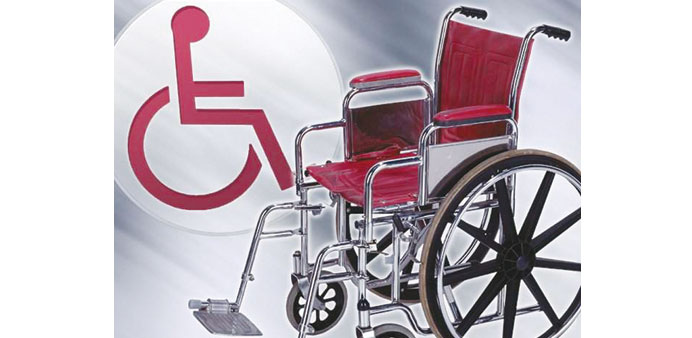|
Between 500mn and 600mn people worldwide are living with a disability. According to statistics from the World Health Organisation (WHO), approximately 10% of children and youth in the world (about 200mn) have a disability. |
There are many causes of disabilities in children. These include genetic factors, conditions related to pregnancy or childbirth and those affecting newborns. In addition, there are those conditions related to the different types of violence experienced by children, particularly in times of war.
In young children, the deficiency of certain minerals such as iodine affects their mental development and the same deficiency in the mother during pregnancy can result in varying degrees of intellectual disabilities in infants.
A wide range of toxins in the environment has a negative effect on the physical and mental development of children. It is the case of lead, pesticides and certain plastics.
Even children toys have been found to contain toxic elements. In a study carried out in six Eastern European and Asian countries researchers found toxic metals in 29% of the toys studied.
Children are more vulnerable than adults to the negative effects of environmental toxins. Because children have a higher metabolic rate and key organs are still developing rapidly during childhood and the kidney and liver are not fully developed, they cannot eliminate toxins as well as adult organs.
Increasingly, the continuous exposure to environmental toxins is considered an important cause of disability. Developing countries also have these problems, because many toxic substances are less regulated than in industrialised countries. In addition, certain disabilities in children are the result of the mother’s exposure to toxic substances such as alcohol, nicotine and mercury during pregnancy.
Malnutrition is a common cause of disability and is a direct result of poverty. This is one important reason to address poverty affecting large numbers of children. Malnourished children may develop learning disabilities; in addition, they may become blind or develop hearing loss.
Poverty is both a cause and a consequence of disability. The costs of caring for disabled children are very high, particularly for mothers who are unable to work and contribute their income to the family.
Disabilities in children often affect their educational possibilities. In some developing countries, up to 90% of children with disabilities do not attend school, limiting their chances for better education and future employment.
All these situations pose a number of challenges about how to cope better with children with disabilities. Disability experts have concluded that early intervention can demonstrably improve those affected with disabilities.
Many actions to address the basic needs of children with disabilities do not require a complicated infrastructure or big expenses. They can be carried out by taking advantage of community resources and existing infrastructure.
A specific form of local support is the implementation of programmes designed and carried out by local communities. This concept was developed by the World Health Organisation in the late 1970s and early 1980s. It stresses the rehabilitation, equalisation of opportunities, poverty reduction and social inclusion for all children and adults. All members of the community benefit and social and community leaders learn to work together.
Fortunately, de-institutionalisation of children with disabilities has become the norm. In order for it to be truly effective, it must be accompanied by the development of suitable community structures for the care and education of children with disabilities. Educational institutions should include children with disabilities in regular education programmes and should eliminate their segregation.
It is extremely important to improve the situation not only for disabled children, but also to address the needs of the family environment. Siblings, for example, may resent the extra attention given to children with disabilities. For parents, it poses enormous physical and emotional demands for people already living in very stressful situations.
These considerations underscore the need for a holistic approach to children with disabilities. This involves developing national policies that promote opportunities for disabled children and properly allocating resources to meet their needs. In addition, it is important to develop actions to eliminate stigma, which is one of the most critical barriers to solving problems affecting these children.
At the fifth annual International Shafallah Forum, held on January 2012 in Doha, Dr Rima Salah, Unicef deputy executive director, called attention to the needs of children with disabilities, particularly in emergency situations. Addressing the needs of children with disabilities is not only a duty that we as a society must embrace. It is also an expression of the compassion and intelligence we need to create a better society.
♦ Dr Cesar Chelala is an international public health consultant and a co-winner of an Overseas Press Club of America award.



